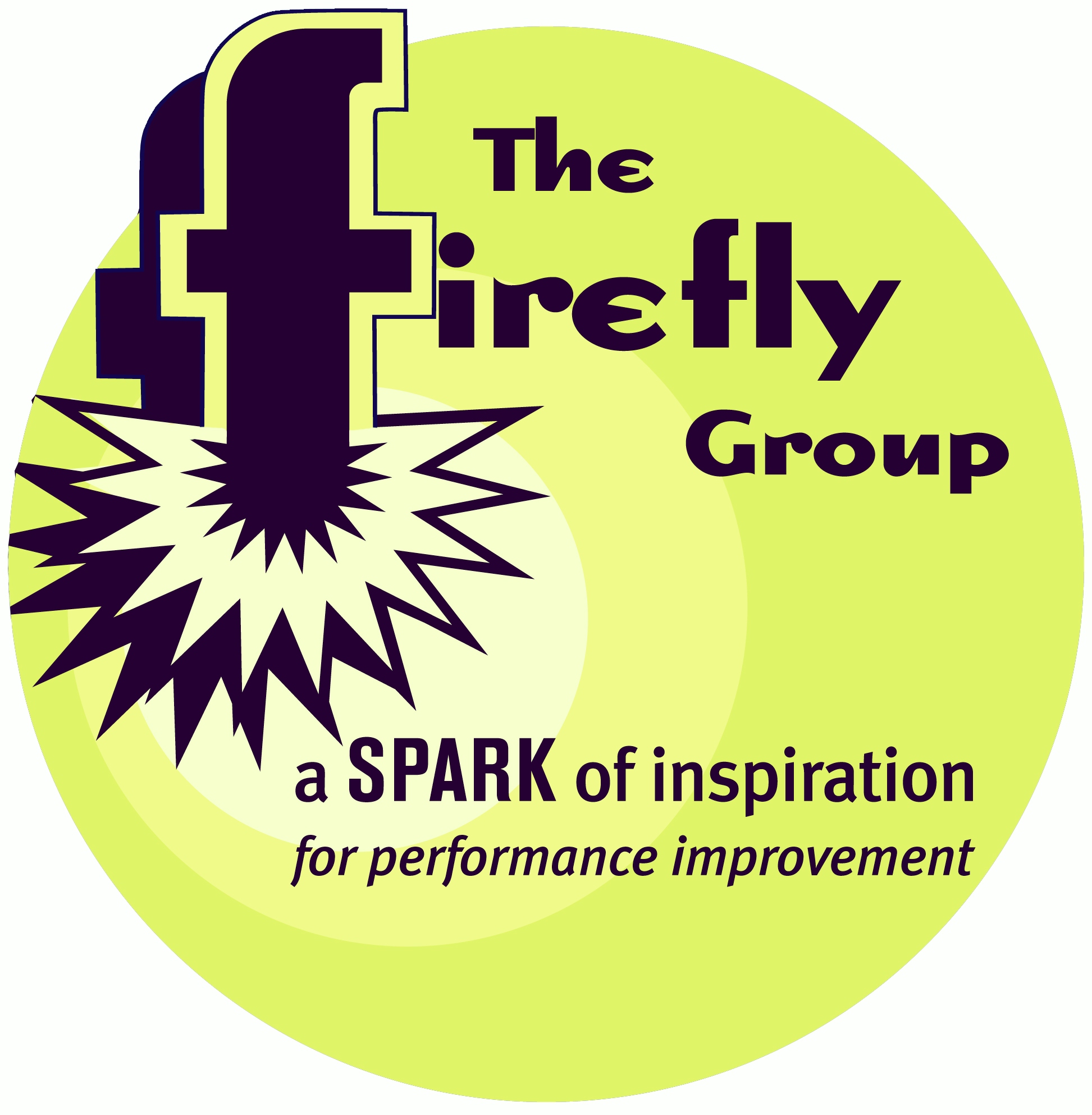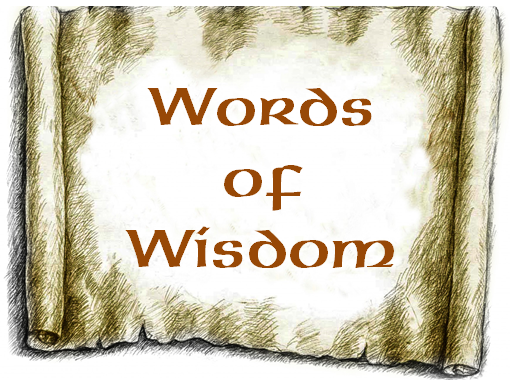

What's New

Words of Wisdom
52
cards and 15 activities to spark conversations and make sense of learning.
Learn more HERE.
What We Do
The Firefly Group helps people make sense of what they learn and experience.
Whether facilitating a group for better decision-making, keynoting a conference, leading a training, or writing an instructional design, we use novel methods that engage, spark creativity, and produce memorable results.
 If
this sounds like a good direction for your organization, let's talk about
how we might collaborate! Please give me a call (802.257.7247) or send an
. - Brian
If
this sounds like a good direction for your organization, let's talk about
how we might collaborate! Please give me a call (802.257.7247) or send an
. - Brian
 Your ETR (Estimated Time to Read): 10 minutes Your ETII (Estimated Time to Implement Ideas): 5 weeks |
The best learning event of the year for trainers, facilitators, and instructional designers!
North American Simulation and
Gaming Association Conference
Meet
me at Gamification Buzz
Seattle,
Washington
October 21-24, 2015
September 2015
|
Say
It Quick |
Discoveries bits of serendipity to inspire and motivate |
Ideas fuel for your own continuous learning |
Activities tips and tricks you can try today |
| Creating Change | Got a Femtosecond? | The Face of Change |
Readers Respond to this article. Click HERE.
How do you and your team think about change? Does it happen too fast or take too long? Learn some new ways to consider organizational changes beginning with this story in just 99 words.
Creating Change
Whoa. I just experienced a sudden pang of hunger! Searching the house for a quick fix I find a bag of corn chips and grab a fistful. Munching away, I immediately feel better. The food has yet to hit my stomach but already the hunger is diminishing. Interesting!So often I worry about making change happen and spend time anxiously waiting for the final result. Sometimes doing anything, just creating movement toward the goal, is enough to get relief, to see progress.
If we start moving, we don't need to have a full belly to create change.
Got a Femtosecond?
Yes, of course you've got a femtosecond. In fact, no matter how busy you are,
you have more of them than you can use in any instance.
A femtosecond is just a fraction of a second. How small, exactly? Let's make some comparisons.
Take one second and divide it into a thousand parts. Those are milliseconds and you can use them to measure the time to read to or write from a CD-ROM or hard disk.
If you divide a second into a million parts, you have microseconds (10 to the -6). Cut your second into a billion pieces and you have nanoseconds (10 to the -9) and you can measure the speed of read or write time to random access memory for the computer you are using to scan this newsletter.
But why stop
here? Our next division is the picosecond (10 to the -12). To measure just
one, slice that second of time into a trillion pieces. Next, shave a second
into a quadrillion parts to finally get to a femtosecond (10 to the -15).
And what can you do with a femtosecond? If you were Ahmed H. Zewail, you would use it to flash lasers at intervals of just a few femtoseconds so you could observe chemical reactions in real time. Your research would show that there is not always an abrupt shift between one chemical state and a different one. In fact, Zewail's work indicates there are intermediate states with their own sequence of activities that occur between the beginning and end of a chemical reaction. Scientists speculate that it may be possible to control chemical reactions during the few femtoseconds between the start and completion of a reaction. Zewail's technique using lasers and counting femtoseconds earned him the Nobel Prize in Chemistry in 1999.
Oh, and if you
are not satisfied with all the femtoseconds you've been accumulating while
reading this article, perhaps you'd like to take one of those seconds, shatter
it into a quintillion fragments (10 to the -18) and use your new-found attoseconds
to make measurements in photon research!

How Do You
Think About Change?
They say, "The only constant is change." That's probably because change is
constantly happening even in units of femtoseconds that seem too small to
accomplish anything.
The discussion of femtoseconds presents a nice contrast to the 99-Word Story. Both examples are about change: sometimes it happens slowly, other times quickly, but in all cases, it's a process. Many intermediate steps occur between the desire for change and its completion. And we can decide how precisely to record those steps.
Much of our dissatisfaction with change is with its pace. It's either too fast or too slow. But if we remember that change is a process of constant movement, we can alter our perception about its pace. Is change happening too quickly? Slow it down by breaking activities into smaller "femto-units". You can then be deliberate about execution. Is change happening too slowly? Start anywhere with a big bite to satisfy your hunger for movement. Make an immediate reassessment to determine your next step.
This ability to parse the process of a change into distinct units raises other questions. When does a change actually begin? Does a project begin with an initial phase of analysis or does it begin with the concepts that grew out of a brainstorming session weeks earlier? Does change begin with an initial desire before we even know what change to make?
When does a change end? Does that happen with the final project deliverable or with a need to improve upon that deliverable a few months later? Does the conclusion of one change lead to the beginning of the next?
If nothing else, I hope these thought about change make your next transition easier to stomach and that you'll take at least a femtosecond and how.
The Face of
Change
What are
all the phases that must take place between the conception and completion
of a project? How many ways can or should we slice the steps of a project?
How much precision do we need to make an important change?
You can begin a discussion with your team using this activity. Improvisational theater actors play with this activity to open lines of creativity and communication. But you can use it to open a conversation about change and the challenges it presents.
Materials:
One marker for each person
Several sheets of blank paper for each personTime: 20 minutes
Procedure:
Have people choose a partner and sit next to them with several sheets of paper centered between each other. The goal is to cooperatively draw one face on the same sheet of paper. Partners may not do any planning before they start, neither may they talk while drawing.They should take turns making marks on the page to complete a face. When one person hesitates, the drawing is finished. The pair should then begin another drawing immediately. Ask them to stop after making four faces.
Discussion:
- How satisfied are you with your drawings?
- What made it difficult or easy to draw a face cooperatively?
- To what extent did you find yourself planning your next move?
- What did you feel and think when your partner "interfered" with your plans?
- What strategies did you use to address the changes that came up in your drawing process?
- How did you learn the intentions of your partner?
- How is this like change in your organization?
- How would this activity have been different if you had been instructed to go as slowly and deliberately as possible?
- Share the concept of femtoseconds and how they are used to measure nearly imperceptible changes. What are some changes that might have been going on in this activity that we might not be aware of? (e.g. The effect of emotions, stress, or performance anxiety on the types of marks made.)
- In this activity you were not allowed to talk. How is that like change in organizations?
If you wish to play a second round, ask partners to draw any recognizable image as long as it is not a face. Again, no preplanning and no talking while drawing are allowed. Encourage people to take as much time as they need. After four images have been completed, stop for a discussion.
Discussion:
- How did this round compare to the first?
- What strategies did you use to create a recognizable image?
- How did you and your partner decide when your drawing was finished?
- What other information became available for the creation of your drawing by slowing the process?
- What additional parallels to organizational change do you see in this round?
Whether fast or slow, I look forward to your experiences with change!
Bonjour, cher ami
Your last on the femtosecond of change is very thoughtful. Changes in our life come as a shock: announcements, understanding, getting shot, accidents. There seems to be no transition between two states, we are just suddenly different, and we cannot go back, which we call sometimes the AHA ! moment.Studies of the brain show that our brains do their own thinking, and that the conscious part of learning or decision making is only a review of what our brain has already done, a kind of fail-safe. Breaking down a change into femtoseconds, or less, is an effort to identify a moment, obviously very short, in which our conscious mind can modify the action of our brain.
Is it possible, or are we controlled invariably by our brains ? Learning is a key kind of change, and much of the effort comes from trying to program our brain to change its behaviour. Can the time required for this be shortened, by example with a process like a game (!) ? You could call for a practice that would be "prolonging the instantaneous" for mastering our learning processes!
May you live billions of femtoseconds ! Amitiés, Pierre Corbeil
|
Whether you need a keynote speaker, or help with strategic planning, performance improvement, or training facilitators and trainers in your organization, I look forward to your call (802.257.7247) or . -- Brian |
Read previous
issues. Click Library!
To add or delete your name to our mailing list, email
with a short note in the subject line.
I want this newsletter to be practical, succinct, and thoughtful. If you have suggestions about how I can meet these criteria, please let me know! Send me an with your thoughts and ideas.
Home
| Services | Products
| Mission | Ideas
| The Group | The
Buzz
(c)
2015 The Firefly Group